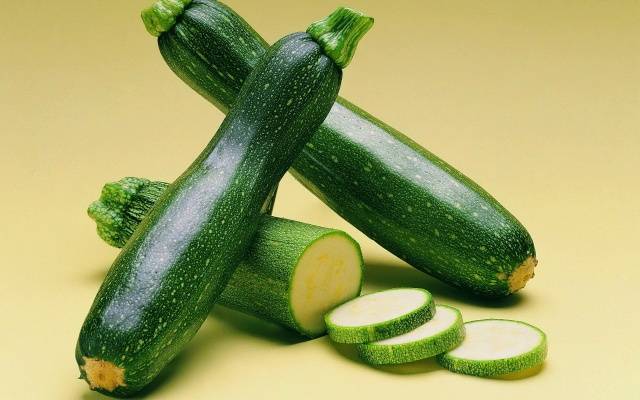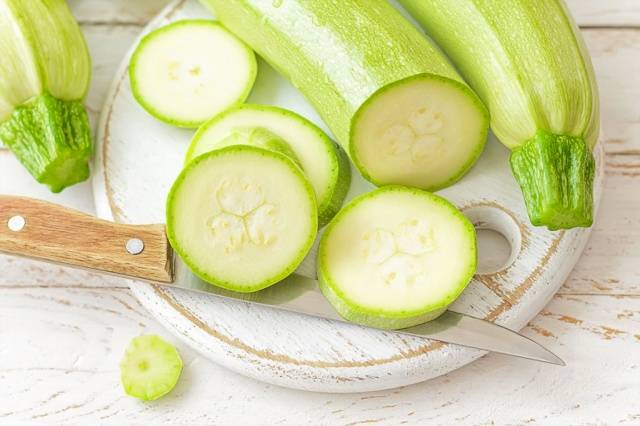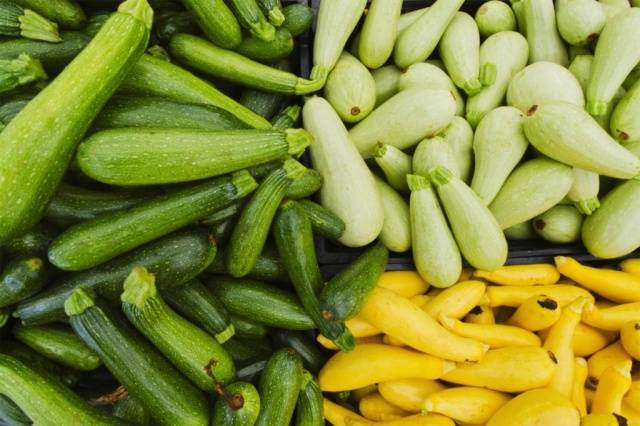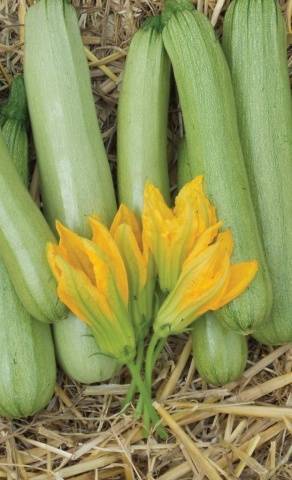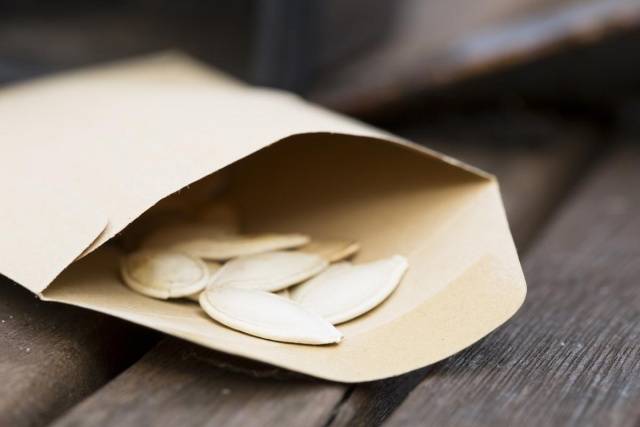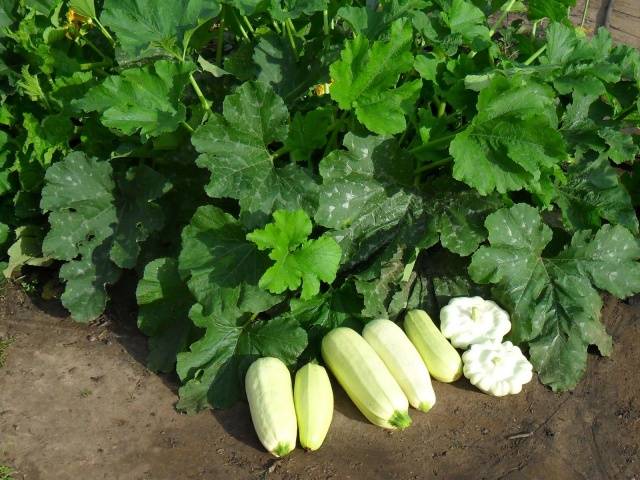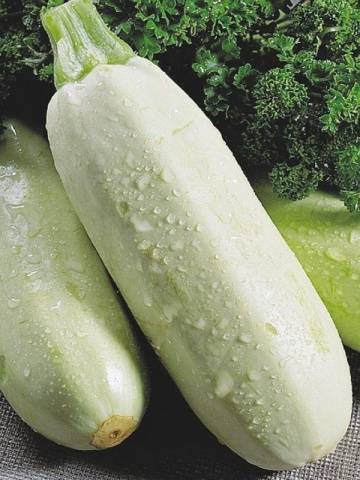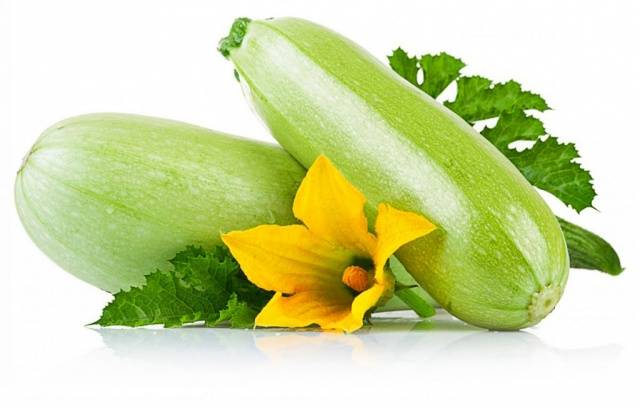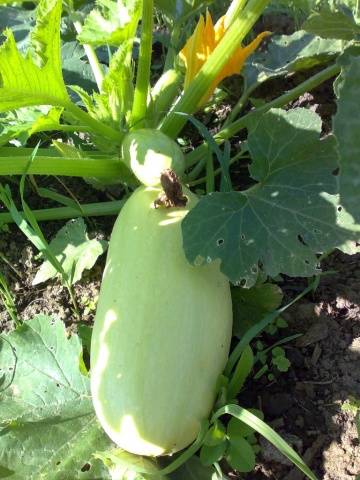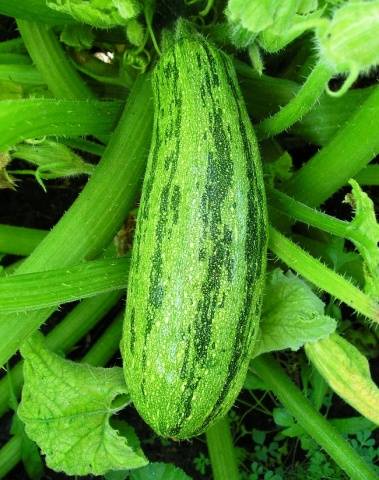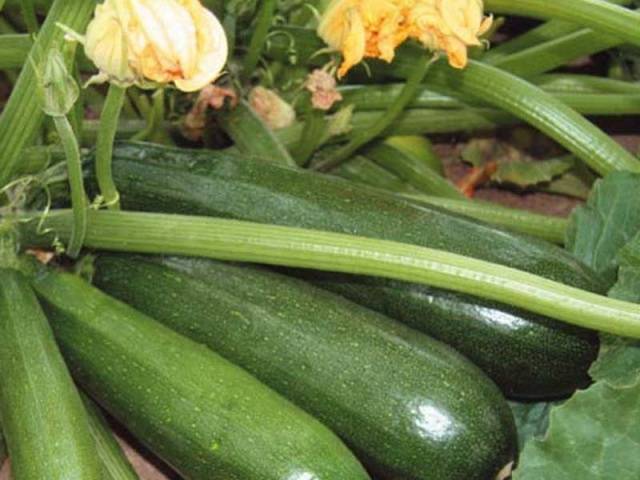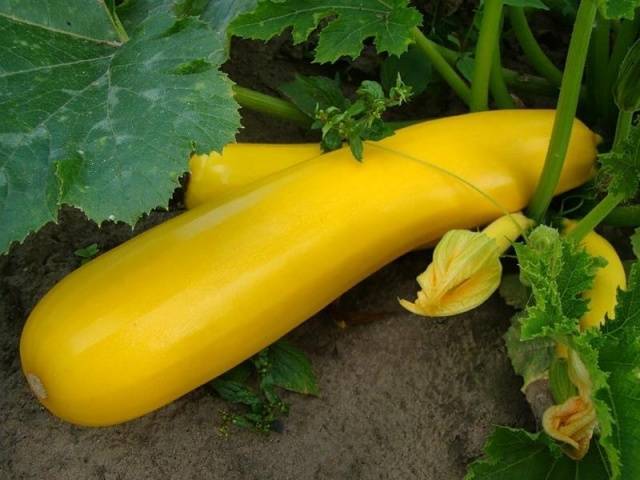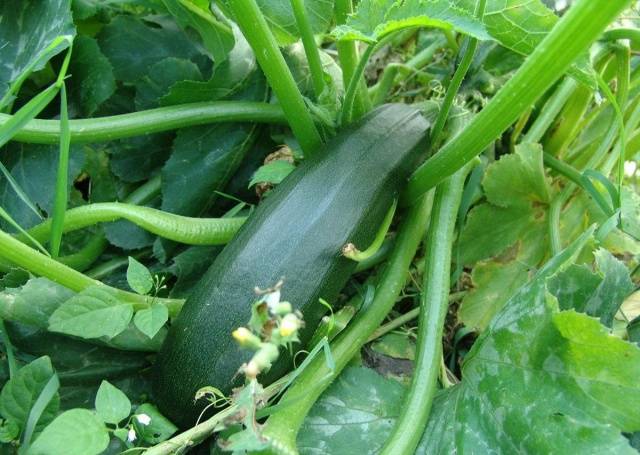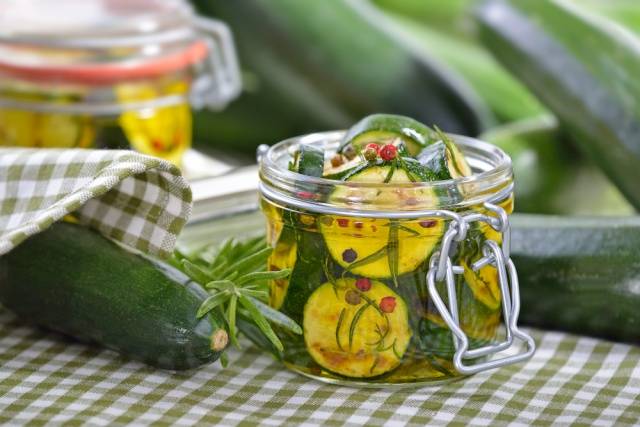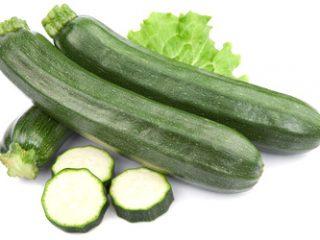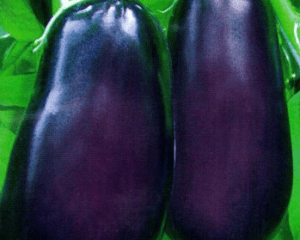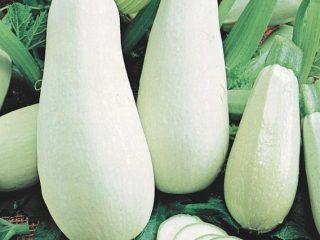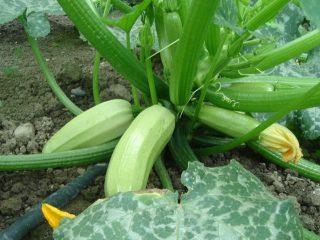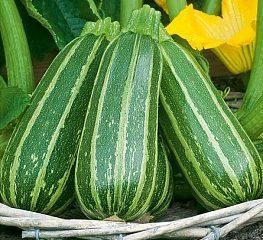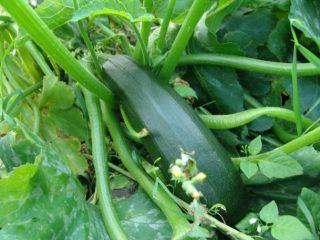Content
The most delicious and healthy thing about zucchini is the pulp. It is not surprising that any housewife wants more pulp in the fruits, and less peel and seeds. Therefore, the question often arises: “What varieties should be chosen to obtain seedless zucchini?” To find such fruits and learn about their characteristics, it is necessary, in principle, to understand such a vegetable as zucchini.
Do zucchini exist in nature without seeds?
Each plant contains seed material, because thanks to this, crops can reproduce. Therefore, lovers of pulp without seeds will have to be a little disappointed - in nature there are no varieties of zucchini without seeds. Absolutely all zucchini contains seeds, but there is a difference in their size, quantity and ripening time.
A subspecies of squash called zucchini satisfies the requirements of seed opponents more than others. Seeds are extremely rare in zucchini pulp., besides, there are very few of them, and they are small in size. However, an overgrown zucchini is just as full of seeds as any other squash. Therefore, it is necessary to pick the fruits while they are young, when their length reaches no more than 20 cm.
So, in nature there are no special types of seedless zucchini. You can get such vegetables if you pick the fruits from the bushes early, without waiting for them to fully ripen.
Variety or hybrid
Each owner has his own requirements for the quality of zucchini, so everyone has their own favorite varieties of this vegetable.
The main division occurs according to selection characteristics: varieties or hybrids. Both types of zucchini have their own strengths and weaknesses. Many gardeners choose foreign hybrids, noting their characteristics such as:
- Productivity – indeed, thanks to a longer growing season and bunched ovaries, a larger number of mature fruits can be harvested from one bush of hybrid zucchini.
- Aesthetic qualities – almost all hybrids have an interesting appearance. Among them there are bright green, striped, yellow fruits, which may have an unusual shape and non-standard size. Beauty attracts people, so hybrid zucchini is popular, sells better and is purchased more often.
- Durability – hybrids are more resistant to various diseases than varietal zucchini. In addition, they are artificially acclimatized to certain weather conditions. When buying seeds, you need to give preference to those varieties and hybrids that are suitable for growing in a particular region.So, there are southern crops, zucchini for temperate climates, and hybrids for cold northern regions with short and cool summers.
- Taste characteristics hybrids are slightly lower than varietal zucchini. The hybrids do not taste as aromatic, but they have a thinner peel and practically no seeds inside.
- Commercial qualities – despite the thinner skin, hybrids tolerate transportation better and retain their presentation for a long time.
All this speaks in favor of hybrids. But varietal zucchini also has its advantages. First of all, it is a richer and brighter taste. Varietal zucchini does not lose its taste even after heat treatment and canning. Therefore, in order to make preparations for the winter, it is better to purchase seeds of varieties.
Another advantage of varietal zucchini is its resistance to low temperatures. If hybrids die at the slightest frost, then some varieties are able to withstand low temperatures without dropping flowers and ovaries.
How to choose seeds for planting
When choosing a zucchini variety, you should not pay too much attention to its ripening time. Zucchini is an early ripening crop; the first fruits on the plant appear already on the 45-48th day after planting the seeds. The difference in ripening speed between early and middle varieties can be only a few days. Moreover, it can be adjusted depending on conditions (temperature, sun, watering, etc.).
The method of planting seeds deserves more attention. There are many varieties and hybrids that produce high yields of zucchini. But in order to get the maximum number of fruits, it is necessary to maintain a constant temperature and humidity level, that is, the plant is intended for planting in a greenhouse.
Still, most varieties of zucchini bear fruit well in open ground, especially in the southern regions with hot and long summers.
You can collect zucchini seeds yourself from a previous harvest. To do this, several fruits are not picked, but left on the bushes until they dry completely. When the plant dries, the zucchini is picked and left to ripen in a dark, cool place for 10-15 days.
Then the zucchini is cut and the seeds are taken out, which need to be washed and dried. Such seed material is quite suitable for planting, but this rule applies only to varietal zucchini. It is not possible to grow a plant from hybrid seeds. To plant a new variety or hybrid, seeds must be purchased. Such seed material undergoes special processing and does not require any preparation before planting.
"Gribovskie 37"
Zucchini varieties “Gribovskie 37” are mid-early plants. After planting the seeds in the ground, it takes about 55 days for the fruits to fully ripen. This domestic hybrid can be planted either by seeds or seedlings. Seeds for seedlings must be sown at the end of April; after planting the seedlings in the ground, they are covered with film for several days.
To plant seeds in open ground, a stable temperature is required to exclude the possibility of frost.
The fruits of the hybrid are cylindrical in shape and greenish in color, which turns white as the vegetable ripens. The weight of a mature zucchini can reach 1700 grams, but more often it fluctuates around 700 grams.
Ripe fruits have a thick peel and large seeds, their pulp is snow-white and very juicy, with a pronounced taste.
To obtain pulp without seeds, vegetables must be picked on the 10th day after the appearance of the ovary. Tender young zucchini is considered a dietary product that is very healthy.
They can be prepared in any way; the Gribovskie 37 variety produces excellent caviar that can be preserved for the winter.
The plant is resistant to many diseases, but is “wary” of aphids and powdery mildew, and therefore requires proper care. But zucchini tolerates cold well, so it is suitable for growing in the north of the country. The bushes grow compact and have many ovaries. From one plant you can harvest about 8 kg of vegetables.
"Apollo F1"
This hybrid will bring a harvest in any summer: it is not afraid of the cold, it is not harmed by shade, and the zucchini is resistant to disease and rot.
You can get the first fruits from a plant such as “Apollo F1” already on the 38th day after planting the seeds, because zucchini is an early ripening plant. The bushes grow spreading with many leaves. Over the entire season, 8-10 ovaries appear on one plant.
Zucchini grows large - up to 40 cm in length, has an even cylindrical shape and green color with white dots. The weight of a mature fruit reaches 1.5 kg, which makes the hybrid one of the most productive.
The peel of zucchini is quite thick, which makes it shelf-stable, maintaining freshness and beauty. The pulp of the Apollo F1 variety is quite dense and white.These zucchini are excellent for cooking and canning; in particular, they make excellent caviar.
"Video clip"
A representative of domestic varietal zucchini pleases with its early ripening period. The appearance of the first fruits can be expected already on the 36th day after planting the seeds. The plant tolerates temperature changes well, is resistant to most diseases, and can withstand even slight frosts. The variety also performs well in the southern and central regions; it is not afraid of the sun and drought.
Roller squash bushes are small and have few foliage and shoots. The fruits ripen at the same time - 6-8 pieces on one plant. The color of the peel is light green, the pulp is also a little green.
The size of the zucchini is quite large - their weight reaches 0.9 kg, and their shape is pear-shaped with a large diameter.
Roller squash preserves well, making it suitable for transportation and cultivation for sale. The taste qualities are quite high; these zucchini can be consumed not only canned or fried, but also made into fresh salads and snacks.
The Roller variety is perfect for those who want to collect their own seeds for the next harvest. The seed chamber in the fruit is large and the seeds are large.
"Zebra"
One of the variants of zucchini squash with a thin peel and a small amount of seeds. The zucchini of this variety is distinguished by its appearance - its peel is light green, with dark stripes clearly visible on it. The surface of the fruit is glossy and smooth.
The shape of the zucchini is elongated and regular. The weight of one vegetable reaches 800-900 grams. “Zebra” tolerates transportation well and retains its presentation for a long time.This zucchini can be stored for winter; fresh fruits are sometimes stored even until March.
The taste of zucchini is high, the pulp is tender and seedless. The vegetable can be cooked in any way, as well as canned.
To get the high yields for which the variety is famous, you will have to work hard. This plant is quite capricious. Zebra zucchini loves sunny areas with well-fertilized soil. The seeds germinate well and are resistant to frost. The bushes are compact without dense side shoots.
"Skvorushka"
One of these varieties with predominantly female inflorescences is the Skvorushka zucchini. It is early ripening, the first fruits ripen approximately on the 50th day after planting the seeds.
The vegetable belongs to the zucchini subspecies - it has a thin green peel with numerous white dots. The surface of the vegetable is ribbed and shiny. Inside the zucchini there is tender and very juicy pulp, without seeds. The fruits are suitable for any dishes and canning.
Despite the fact that the zucchini skin is thin, it tolerates transportation well and retains its presentation for a long time.
The plant is bushy, compact, and unpretentious in terms of care. Zucchini “Skvorushka” tolerates frost, extreme heat and drought well. To prevent the fruits from overgrowing, they must be collected regularly. Under optimal growth conditions, more than 7 kg of zucchini can be obtained from one square meter of soil.
"Golden"
One of the unusual varieties is “Zolotinka” zucchini, which has a bright yellow color not only of the peel, but also of the pulp. The first vegetables appear quite early - on the 55th day after germination. The variety can be grown both in a greenhouse and in open ground. Zucchini will grow both in the central part of Russia and in the south. But for the northern regions it is better to choose a more suitable variety, or plant the seeds in closed ground.
Zucchini "Zolotinka" is grown both by seeds and seedlings. For the seedling method, seeds are sown at the end of April.
The shape of the fruit is cylindrical, the surface is ribbed. The size of zucchini is small - they rarely grow more than 10 cm in length, and their weight does not exceed 600 grams.
The flesh of zucchini is as bright yellow as the peel. It has high taste, has a certain density and contains a large amount of sugar. After canning, the vegetable retains its bright color, so it is often used by housewives.
The bushes of the plant are climbing, resistant to diseases and pests.
"Tsukesha"
One of the most productive varieties. In order for the plant to bear fruit for a long time, it is necessary to pick ripe fruits on time. With this approach, you can collect up to 12 kg of zucchini from one meter of soil.
The variety "Tsukesha" belongs to zucchini, has a thin green peel with white specks, and white juicy pulp. There are no seeds inside the young fruits, they are tasty and aromatic.
The bushes of this variety are compact and low. The fruits are oval, elongated, with slight ribbing. The weight of one zucchini reaches 1 kg. Vegetables tolerate transportation well and are suitable for long-term storage.
Recommendations from experts
Experienced vegetable growers advise those who like seedless zucchini to choose varieties like zucchini. And still To fully guarantee that there will be no seeds inside the fruit, even zucchini must be collected from the garden on time.
In principle, the fruits of any zucchini varieties do not contain seeds until a certain stage of ripening, so they simply need to be picked young, before the length of the fruit reaches 20 cm. The most effective will be the cultivation of productive varieties. It is necessary to choose zucchini with long-term fruiting, then you will be able to eat young vegetables without seeds and prepare caviar from mature, aromatic zucchini.

